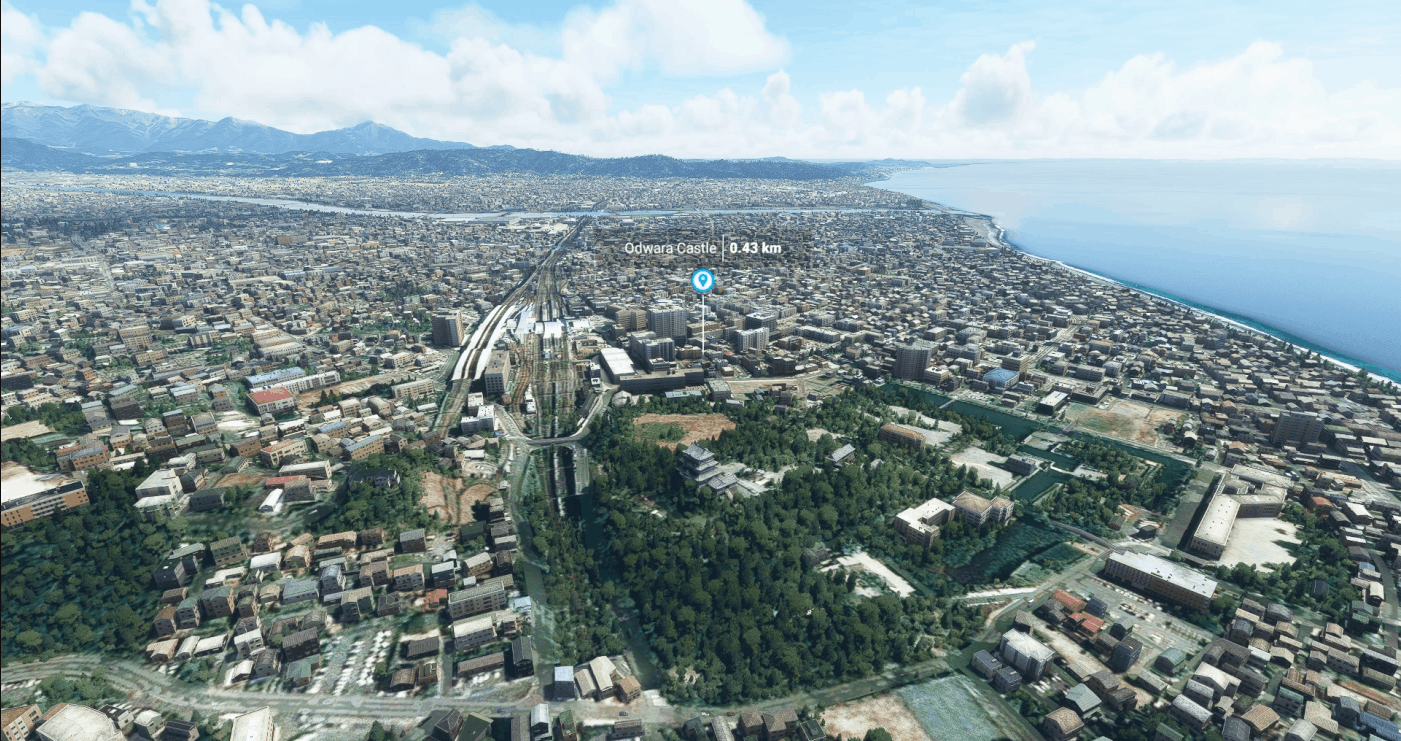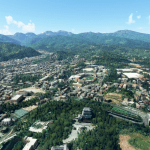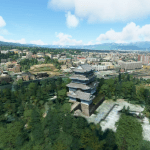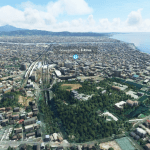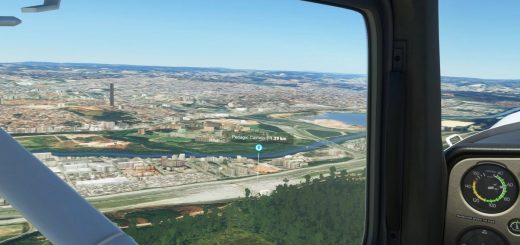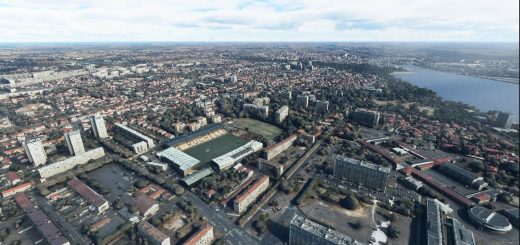Odawara Castle v0.1
Odawara Castle (小田原城, Odawara-jō) is a landmark in the city of Odawara in Kanagawa Prefecture, Japan.
Odawara was a stronghold of the Doi clan during the Kamakura period, and a fortified residence built by their collateral branch, the Kobayakawa clan, stood on the approximate site of the present castle. After the Uesugi Zenshū Revolt of 1416, Odawara came under the control of the Omori clan of Suruga. They were in turn defeated by Ise Moritoki of Izu, founder of the Odawara Hōjō clan in 1495. Five generations of the Odawara Hōjō clan improved and expanded on the fortifications of Odawara Castle as the center of their domains, which encompassed most of the Kantō region.
During the Sengoku period, Odawara Castle had very strong defenses, as it was situated on a hill, surrounded by moats with water on the low side, and dry ditches on the hill side, with banks, walls and cliffs located all around the castle, enabling the defenders to repel attacks by Uesugi Kenshin in 1561 and Takeda Shingen in 1569.
After Tokugawa Ieyasu completed Edo Castle, he turned site of Odawara Castle over to one of his senior retainers, Ōkubo Tadayo, who reconstructed the castle in its present form on a considerably reduced scale, with the entire castle fitting inside what was once the third bailey of the Sengoku period Hōjō castle.
The castle suffered great damage during the 1703 Genroku earthquake, which destroyed most of the castle structures. The donjon was restored by 1706, but the rest of the castle took until 1721. Extensive damage occurred again during the 1782 Tenmei earthquake and once more during the 1853 Kaei earthquake. During the Boshin War of the Meiji restoration, Ōkubo Tadanori permitted the pro-Imperial forces of the Satchō Alliance to pass through Odawara on their way to Edo without opposition.
The new Meiji government ordered the destruction of all former feudal fortifications, and in compliance with this directive, all structures of Odawara Castle were pulled down from 1870–1872. In 1893, the stone base of the former donjon become the foundation for a Shinto shrine, the Ōkubo Jinja, dedicated to the spirits of the generations of Ōkubo daimyō.
In 1938, the castle site was proclaimed a National Historic Site,[3] with the area under historic preservation restrictions expanded in 1959, and again in 1976 based on further archaeological investigations.
The three-tiered, five-storied donjon, the top floor of which is an observatory, was rebuilt in 1960 out of reinforced concrete to celebrate the 20th anniversary of the proclamation of Odawara as a city. However, the reconstructed donjon is not historically accurate, as the observation deck was added at the insistence of the Odawara City tourism authorities. The castle tower was remodelled from July 2015 until April 2016 to improve earthquake resistance and to modernise its exhibits.
The reconstructed Odawara Castle was listed as one of the 100 Fine Castles of Japan by the Japan Castle Foundation in 2006.
Odawara Castle comes with its own POI.
GPS Coordinates: 35.25091859771825, 139.15337412356595

